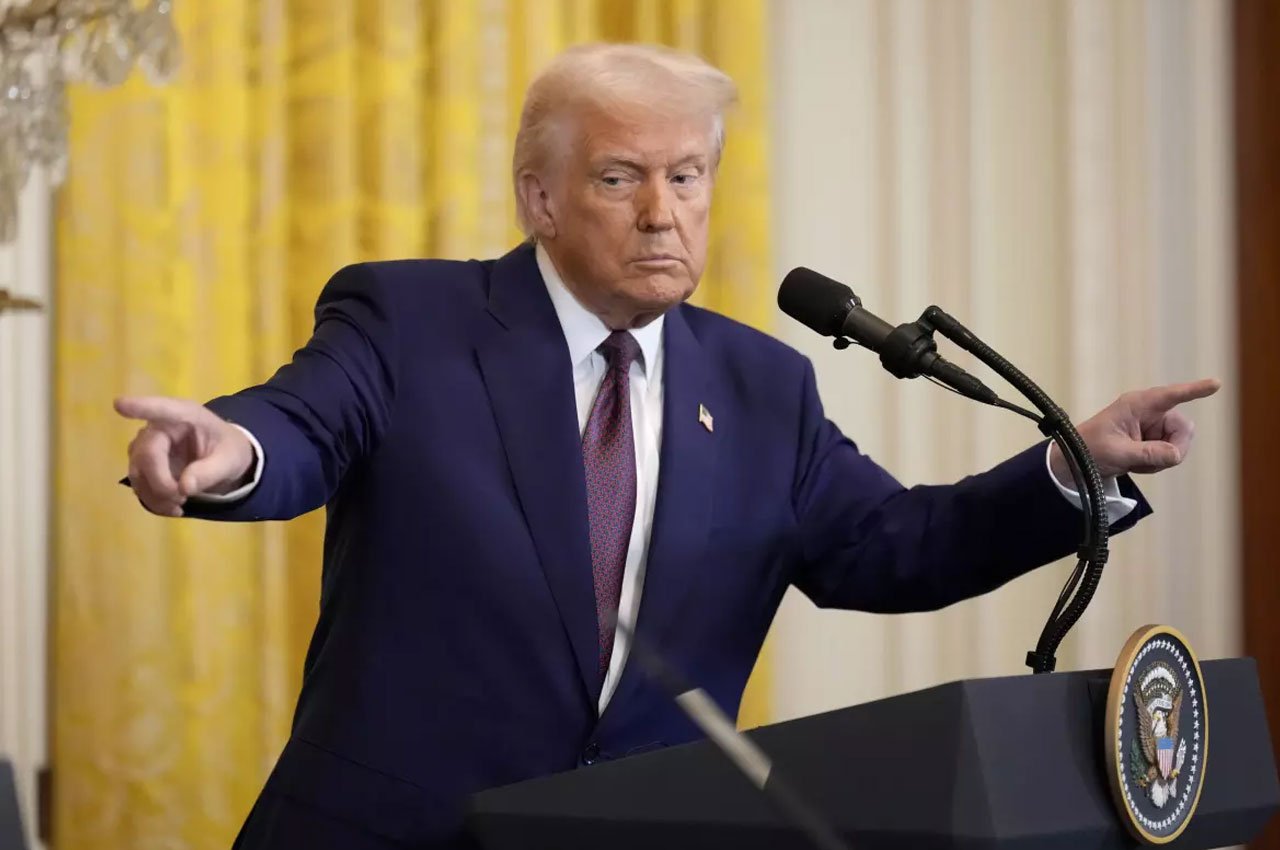The U.S. has announced a sweeping round of new tariffs on 14 countries including key allies, with duties ranging from 25% to as high as 40%, effective August 1, reported Money Control. The move has triggered alarm among American trading partners, disrupted global markets, and revived a protectionist policy playbook reminiscent of Trump’s earlier presidency.
According to letters sent by President Trump, nations such as Japan and South Korea will face a uniform 25% tariff, while countries including South Africa and Bosnia & Herzegovina will be subject to 30%, and the highest rates—40%—will apply to Laos and Myanmar. Indonesia, Cambodia, Bangladesh and Serbia are among the other nations to be hit with duties between 32% and 35%, amplifying fears of supply chain shocks and political backlash.
Economic Shockwaves and Market Volatility
The announcement immediately rattled markets. The S&P 500 index dropped by approximately 0.8%, reflecting investor concerns over deteriorating U.S. trade relations. Asian markets, while less volatile, remained on high alert given the disruption these tariffs could cause to trade flows. Analysts warn that companies may rush to reroute supply chains, push up prices and delay orders in anticipation of rising costs.
Global Responses: Diplomacy Meets Defiance
Affected countries have reacted swiftly. Japan and South Korea urged immediate talks to avoid tariff escalation, while Indonesia and Thailand signaled readiness for negotiations. South African officials called the 30% duty unjustified given the absence of U.S. goods restrictions on their end. Meanwhile, Bangladesh’s garment sector—responsible for over 80% of its export earnings—warned of catastrophic impacts, potentially affecting millions of workers.
China, not part of the first wave, still faces its own August 12 deadline under a separate framework. Officials warned they would retaliate if new tariffs target their exports. BRICS countries were also issued a formal warning: any “anti-American” policy moves could trigger an additional 10% surcharge.
A Tactical Pivot in Trump’s Trade War Playbook
Analysts say this move represents a return to the aggressive “reciprocal tariff” policy first unleashed in April 2025. That earlier executive action had imposed a 10% baseline duty on all imports, with sectoral tariffs targeting autos, steel, aluminium and other industries. Now, Trump is extending this strategy to major Asian and African partners, alleging persistent trade imbalances and unfair market practices.
The negotiation deadline, originally set for July, has been extended to August 1 amid frantic arms of diplomacy. While the White House insists the approach aims to protect American workers, critics warn of rising consumer prices, supply chain disruption and retaliation from trading nations that could spiral into wider trade wars.
Disruptions to Export-Driven Economies and Manufacturers
Export-reliant Asian economies like Japan, South Korea, Malaysia, Thailand and Bangladesh are particularly exposed. Consumer goods, electronics, automotive parts, garments and raw materials are already priced in long-term contracts that may lock in elevated U.S. import costs. For countries like Bangladesh, which earn more than 80% of their forex revenues from apparel exports to the U.S., the stakes are existential.
In contrast, countries like Vietnam and the UK have secured preliminary deals and avoided inclusion in the latest tariff list—demonstrating both the urgency and complexity of ongoing trade diplomacy.
U.S. Consumers and Inflation Pressures Ahead
Domestic experts note the tariffs are likely to inflame inflation in the U.S., especially in categories like electronics, clothing, and home goods. Some believe delaying implementation until post-holiday season may ease immediate impacts, but the long-term effect could reduce real incomes and consumer spending if retailers pass along additional costs.
UBS economist Paul Donovan warned that while tariffs may be postponed until August, the second-half impact could still derail holiday-season planning and consumer confidence.
Political Undercurrents and Strategic Messaging
The tariff letters—prominently shared via Trump’s Truth Social platform—reflect his political posture of renegotiating global trade norms. The White House is framing the move as a stand for “fair trade” and American sovereignty. Critics argue this gambit may backfire by provoking backlash from allies and reinforcing calls for deeper regional cooperation.
As the August 1 deadline looms, affected countries will have to balance economic pragmatism with national dignity, and global businesses will need to prepare for potential disruption. While Trump extends invitations to renegotiate, the stakes are clear: trade diplomacy has sharpened into geopolitics.
Photo Credit: LA Times
For more world stories click here
Follow us for latest updates:




